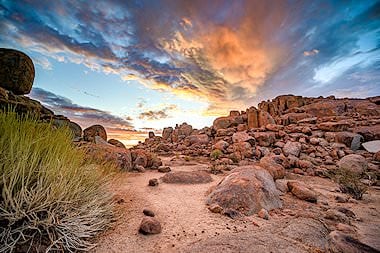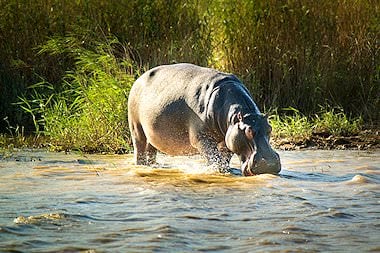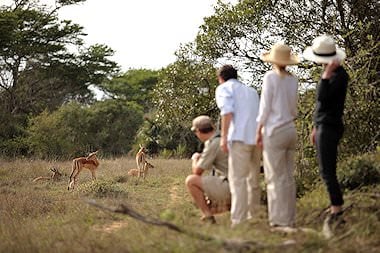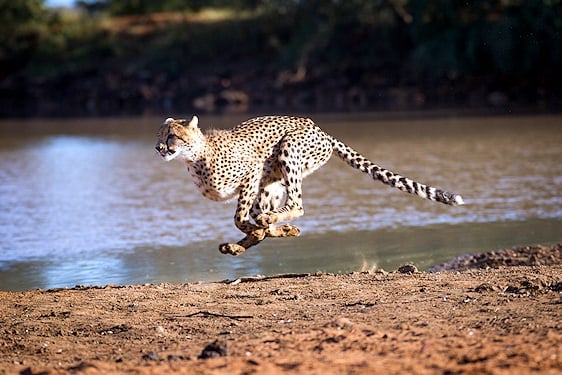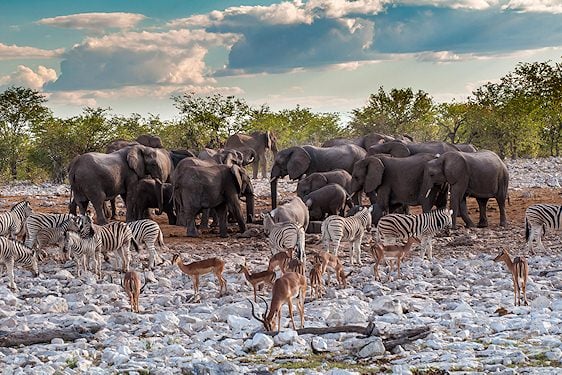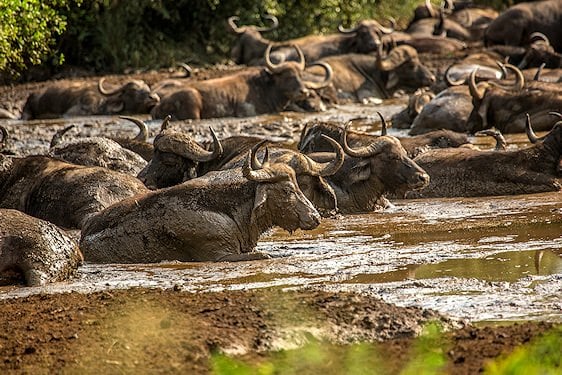- Home
- >
- African Travel
- >
- South Africa
- >
- National Parks
- >
- Kruger National Park
- >
- Mammals
- >
- White Rhino
Description
White rhino are the heaviest of Africa’s large grazers, with massive forequarters, a deep chest, and a broad, square muzzle adapted for cropping short grass. Adults can exceed 2,000 kg and carry two horns on a long, straight profile. Compared with black rhino, the white rhino’s lip is wide and flat rather than pointed and prehensile.

White rhino populations declined sharply with the surge in poaching over the past two decades. Today, the northern white rhino is functionally extinct, while the southern white rhino endures with strongholds in Southern Africa. Protected areas such as Kruger National Park, Hluhluwe–iMfolozi Park, Etosha, and selected private reserves remain key to ongoing recovery and protection efforts.
Best Safari Tours for viewing White Rhino
This privately guided tour explores the finest destinations in Namibia, including rhino viewing in Etosha.
Visit Kruger and the reserves of northern KwaZulu-Natal in the company of a private guide, with chances of white rhino.
Luxury fly-in safari with game viewing in the Sabi Sand and Phinda private reserves—prime territories for white rhino.

Status
White rhino were driven to the brink in the 20th century and later rebounded under intensive protection in South Africa. Renewed poaching pressure has reduced numbers in some strongholds, and the taxon is assessed as Near Threatened. South Africa still supports the majority of the global population, with significant contributions from Namibia, Botswana, and private wildlife areas.

Habitat
Southern white rhino favor open savanna, grassland, and lightly wooded bushveld with ample short grass and reliable water. In Kruger, the central and southern plains hold the highest densities, where nutrient-rich grazing and good visibility suit a bulk grazer. They are scarce in dense woodland far from water and in arid regions with limited grass production.

Social Organization
White rhino form “crashes” usually composed of adult females and their calves; group size often ranges up to 8–10. Adult males are commonly solitary and maintain territories that may overlap portions of a female range. Subadult males sometimes associate loosely or join bachelor groups before establishing territories or dispersing to lower-competition areas.
Finest Safari Areas in Africa for Encountering White Rhino
We recommend the following National Parks and Private Reserves for the best chances of spotting the white rhino on safari game drives and bush walks.

Social Behavior
Daily activity centers on grazing, resting, and wallowing. Mud bathing cools the body and protects skin from parasites; favored rubbing posts near wallows become polished and conspicuous over time. Territorial males spend notable time patrolling and scent-marking with dung middens and urine spraying, while cows coordinate movements with calves and other related females.

Reproduction
When a receptive cow enters a male’s territory, courtship may include blocking, following, vocalizations, and scent investigation. If she accepts, mating occurs repeatedly over several days before the pair separates. Gestation lasts about 16–18 months, producing a single calf weighing roughly 40–70 kg. Females mature around 6–7 years; males often hold territories later, at 11–13 years.

Anti-Predator Behavior
Adults have few natural enemies, though calves may be vulnerable to lion in some systems. Cows position calves ahead to keep them in sight and may charge decisively if threatened. As bulk deterrents, size and the leading horn are effective defenses; nonetheless, human pressures—especially poaching—remain the principal risk to populations across their range.

